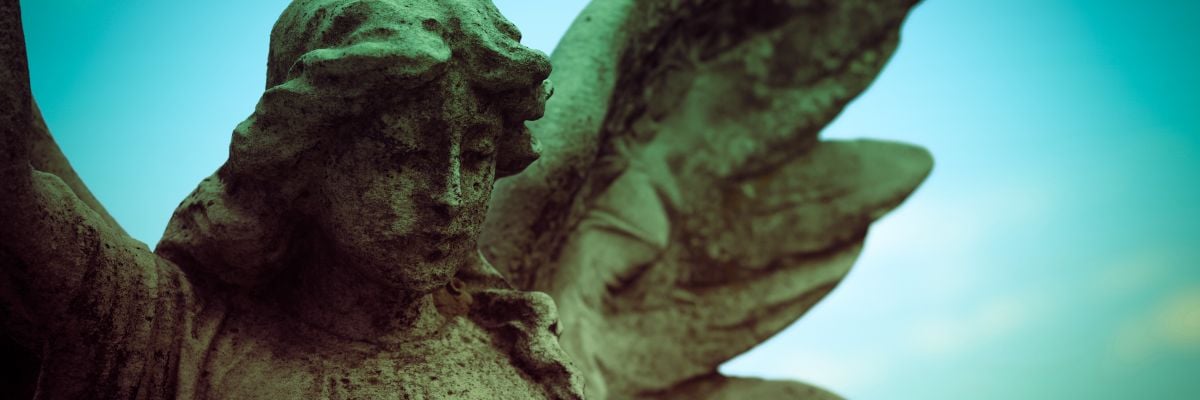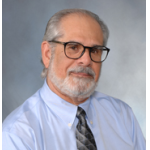
During the time of World War I, a controversial series of extraordinary events is reported to have occurred in Portugal. Most Christians today either are unaware of the events or don’t appreciate their significance.
This article is not about the 1917 Fatima apparitions by the Blessed Virgin Mary. The little-known events described here occurred earlier.
According to three young children, supernatural beings were encountered between 1915 and 1916. Lucia dos Santos (age eight) and her cousins Jacinta and Francisco Marto (ages five and seven) claimed to have been visited by an angel prior to 1917 the Fatima apparitions. Although the type of interaction was different for each child, the messages were the same.
An investigative approach commonly used in science and criminology was undertaken to determine the validity of these claims. Evidence based on firsthand testimony was divided into categories: direct and circumstantial. This evidence was assessed by examining the trustworthiness of these children and simple logic, as well as any potential psychological, sociocultural, and environmental influences.
In the backdrop of World War I, hardship and despair plagued Portugal, but a glimmer of hope arose when several shepherd children in the village of Fatima claimed to have been visited by angels. Fatima, a poor, out-of-the-way mountainous community of no sociopolitical consequence, is located on the slopes of the Serra Do Aire mountains, approximately 80 miles north of Lisbon.
During these times, the general political landscape in Europe was one of revolution and war. The assassination of Portugal’s king resulted in the abolishment of the monarchy. The controlling political party, dominated by Freemasons, embraced progress and science. Religion was seen to be outdated. Many religious were arrested and expelled; religious activities were outlawed and seen as a threat; and in 1911, a series of anti-Catholic laws were instituted under the slogan of “Separation of Church and State.” Spreading news of angelic visions would be seen as dangerous and not tolerated.
Most people in Fatima were peasants, who raised animals and farmed to survive. They had a simple and devout faith in God, with a Catholic church being a main building. Beyond religious instruction at the church, there were no schools, so children were instructed at home. Between 1914 and 1918, Portugal reported a 70-percent illiteracy rate, suggesting a higher level in the remote regions, such as Fatima.
Multiple peasant children from the village of Fatima claimed to have been visited by a supernatural being between 1915 and 1916. The visits’ purpose was to prepare the children for the suffering to follow and the need for man to repent of sin.
The most significant aspects of Lucia’s testimony are summarized below.
1915 Appearance
Lucia, while tending the family flock with some friends, explains, “Around noon they ate lunch and then invited her companions to say the rosary. We just started and saw a figure, like a statue of snow suspended in the air above the trees.” Lucia told no one, but the other children told their families.
When Lucia’s mother heard of the incident and asked, Lucia’s response was that it looked like a person “wrapped in a bedsheet.” Her mother dismissed the event as “childish foolishness.”
Similar events occurred two additional times. Hearing of the event from other village families, Lucia’s mother became very angry with her.
1916 Appearances
Francisco and Jacinta were now allowed to take their families’ herds with Lucia to graze.
We ran through the rosary and began playing. A strong wind shook the trees. Raising our eyes we saw a figure above the olive tree walking toward us. It was a young man fourteen or fifteen years old, white like snow, whom the sun made transparent as crystal and of great beauty.
When he got near to us, he said, “Fear not! I am the Angel of Peace, Pray with me.” Kneeling, he bowed his head all the way to the ground and made us repeat three times, “My God! I believe, I adore, I hope, and I love thee. I ask thee for forgiveness for those who do not believe, do not adore, do not hope, and do not love Thee.”
Rising, he said “Pray like this. The ears of Jesus and Mary are attentive to the voice of your supplications.”
On another occasion, the children were playing, and the visitor identified himself as the Angel of Portugal and said, “Above all accept and bear with submission the suffering that the Lord send you.”
Final Appearance
Lucia states that the children went to their knees and started to pray, “My God, I believe, I adore, I hope, and I love thee . . . ”
A light shined upon us. We stood up and saw an angel, in his left hand was a chalice over which was suspended a Host, from which a few drops of blood were dripping into the chalice. The angel left the chalice suspended in the air, knelt next to us, and made us repeat three times:
Most Holy Trinity, Father, Son, and Holy Spirit, I adore thee profoundly and offer thee the most precious body, blood, soul, and divinity of Jesus Christ present in all the tabernacles on earth in reparation for the insults, sacrileges, and indifferences with which he is offended. And through the infinite merits of his most sacred heart and the immaculate heart of Mary, I ask thee for the conversion of poor sinners.”
The angel then stood up and gave me the sacred host and the precious blood to Jacinta and Francisco and said,
Eat and drink the body and blood of Jesus Christ, horribly insulted by the ungrateful men. Make reparation for their crimes and console your God.
Prostrating himself again to the ground he repeated with us, “Most Holy Trinity . . .” and disappeared.”
The following direct evidence is based on Lucia’s testimony. Circumstantial evidence is related to the event.
Direct Evidence: Lucia and some unrelated friends in 1915 observed a being like a statue suspended above the trees. Lucia kept this event to herself; however, the other children reported the experience to their parents.
In 1916, Lucia and her cousins encountered visitors identified as the Angel of Peace and later the Angel of Portugal. Only Lucia spoke with the angels. Jacinta heard all the responses, and Francisco had only visual interactions. Yet they all provided the same description of the visits.
Circumstantial Evidence: The sophistication of words and phrases repeated by the children indicate an advanced level of theology—for example, “Eat and drink the body and blood of Jesus Christ, horribly insulted by the ungrateful men. Make reparation for their crimes and console your God.”
Although Lucia instructed her cousins to secrecy, Jacinta told her mother. Word spread, reaching Lucia’s mother, who demanded that Lucia stop spreading lies. Animosity in her family grew, and yet, subject to these unpleasant conditions, Lucia’s account never changed. Amid hostility and ridicule, the children were unwavering in their belief and their description of the events.
Trustworthiness of an Eyewitness: Details from their upbringing indicate that Lucia was pious, obedient, and not one to lie. Yet she disobeyed her mother. Francisco was described as passive and quiet, whereas Jacinta, the youngest, was strong-willed. Given their family life, upbringing, and age and the fact that honesty was instilled in them early, there isn’t any indication that they could have fabricated and maintained such a complex story.
Psychology and cognitive science have demonstrated that our memory is malleable. Extraordinary events, especially those surrounded by strong emotional or spiritual significance, are often reconstructed to align with expectations. Since angelic visits were unexpected, isolated events, any influence of expectation is unfounded.
Suggestions that the children’s visions could be related to the religious environment of the country also seem improbable, since they had no interaction with the outside world. Further, the information provided by the visitors was theologically too sophisticated for illiterate children to naturally dream up. Life in these remote hamlets was focused on survival and not on supernatural appearances.
Finally, the people of the town, fearful of potential governmental retaliation, reported nothing of these events to the outside world until after the apparitions of 1917 became public. The possibility of a sociopolitical agenda must therefore be excluded.
In general, people under forty are either unaware or skeptical of these events, and believers tend to focus only on the “wow factor” of the final apparition, the Miracle of the Sun, not fully appreciating what had occurred already in Fatima. The critical message delivered by the angelic visitors clearly emphasized the hurt, insult, and blasphemies toward our God by humanity. However, as a result of God’s infinite mercy and forgiveness, salvation is available those who pray and repent.
This message is even more urgent today, as evidenced by the number of global conflicts over the last hundred years, the lack of respect for the human person, the growth of individualism, and the outright indifference toward God. In light of the ingratitude and blasphemies committed directly against the Lord, the loss of salvation for many is at hand.
The secular fascination with UFOs, aliens, and other paranormal phenomena has missed or neglected the real supernatural phenomenon that has already occurred. I hope this short article will raise awareness of the 1915-16 angelic apparitions in Fatima, highlighting the urgent need to return to prayer and repentance for the salvation of souls.



